The Rebirth of Spanish Grand Rail Travel and Wine Tourism
Friday, October 24, 2025
The launch of the luxury wine train, the 'Al Andalus,' represents more than just a new travel option; it signals a significant commitment by Spain to capitalise on the booming high-end experiential travel market, specifically by linking it to the nation's profound wine culture.

A Moving Piece of History: The 1929 'Al Andalus'
The choice of the 'Al Andalus' train, originally dating back to 1929, is central to the experience. This is not modern luxury, but rather an evocation of the golden age of rail travel. The meticulous restoration focuses on preserving the train’s historical integrity while integrating essential modern comfort. The presence of Art Deco detailing and polished mahogany panelling isn't just decor—it’s a carefully curated environment designed to transport guests into a time of romantic, slower-paced travel where the journey itself was the destination. This 'heritage luxury' niche is highly sought after by affluent travellers looking for authentic experiences that disconnect them from the modern rush. The addition of amenities like queen-size beds and full en-suite bathrooms with showers is the non-negotiable modern concession that transforms the vintage cabin into a true, high-comfort hotel suite on rails.

The Strategic Route: Unlocking Spain's Wine Diversity
The seven-day itinerary from Madrid to Seville is strategically designed to be a condensed masterclass in Spanish terroir and history.
-
Castilla-La Mancha: The journey begins by passing through the vast plains of this region, which holds the title of the world's largest area under vine. This provides a crucial context for understanding the scale of Spanish winemaking.
-
Extremadura: A lesser-known but increasingly relevant wine region, offering guests an off-the-beaten-path perspective and opportunities to discover emerging Spanish wine styles.
-
Andalusia: The route culminates in the south, the spiritual home of Sherry. The inclusion of stops like Cádiz and Seville places guests in the heart of this sun-drenched region, allowing them to fully appreciate the culture behind Spain’s most famous fortified wine.
The excursions—including visits to boutique vineyards and artisan workshops—are key to justifying the premium price point. They ensure the trip is not merely scenic but genuinely educational, allowing guests to meet the producers and understand the history of the regions they traverse.

The culinary offering solidifies 'Al Andalus' as a wine train. The rotating regional menus are crafted to sync with the train’s location, creating a seamless connection between the plate, the glass, and the landscape outside. The sommelier’s role goes beyond service; they are the curator of this edible narrative, selecting wines and Sherries that perfectly complement regional delicacies like Jabugo ham and oxtail stew. This high-level gastronomic integration ensures that food and wine are not simply served, but are the central, binding theme of the entire seven-day cultural immersion.
Starting at €6,600 per person, the train is aimed squarely at the top-tier luxury market, offering an all-inclusive, fully guided, and utterly unique way to experience the cultural and vinous heart of Spain, positioning the 'Al Andalus' as one of Europe's premier railway journeys upon its April 2026 launch.
 2
Like
Published at 9:14 PM Comments (0)
2
Like
Published at 9:14 PM Comments (0)
How Spain Quietly Became Europe's Culinary Superpower
Friday, October 17, 2025
For decades, the global spotlight on fine dining often rotated between the rich classical traditions of France and the experimental frontiers of New Nordic cuisine. Yet, a quiet culinary revolution has been brewing on the Iberian Peninsula, culminating in Spain’s undeniable ascent to the top of the world's gastronomic charts.
Spain is no longer just a contender—it is the dominant force. The recent results from prestigious rankings like The World's 50 Best Restaurants, where a small country has secured multiple spots in the very top tier (including the number one spot, held by Barcelona’s Disfrutar), confirm what many food lovers already knew: Spain is, arguably, the "foodiest" country in Europe.

How did this happen? The country's dominance is not a fleeting trend, but rather a "perfect storm" fueled by a powerful combination of visionary innovation, unwavering reverence for its world-class ingredients, and an intensely democratic food culture.
1. The Avant-Garde Legacy: From El Bulli to Disfrutar
The foundation of modern Spanish culinary dominance was poured decades ago. In the 1970s, the Nueva Cocina Vasca movement, spearheaded by chefs like Juan Mari Arzak and Pedro Subijana, championed a fusion of traditional Basque cooking with creativity and modern flair, putting Spain on the haute cuisine map.
This set the stage for the global phenomenon of Ferrán Adrià's El Bulli. Until its closure in 2011, El Bulli shattered the rules of cooking, pioneering techniques like spherification and foams that are now standard in high-end kitchens worldwide.
The current world champion, Disfrutar in Barcelona, is a direct heir to this legacy. Led by El Bulli veterans Oriol Castro, Mateu Casañas, and Eduard Xatruch, Disfrutar continues to push the boundaries, serving tasting menus of over 30 dishes that seamlessly blend culinary art and science. As Chef Ángel León of the three-star Aponiente notes, Spanish chefs "are veterans," not positioning themselves according to passing fads.
The Iconic Dishes That Defined Modern Cuisine
The global impact of Spanish cuisine can be measured not just in awards, but in the specific creations that became worldwide sensations and inspirations:
-
The Liquid Olive (El Bulli, Ferrán Adrià): The single most iconic dish of the molecular gastronomy era. This perfect, jewel-like sphere of olive juice, coated in a delicate membrane through the process of spherification, burst on the palate with the intense, pure flavor of an olive. It was a revolutionary moment that demonstrated the potential of culinary science to manipulate texture and surprise the diner.
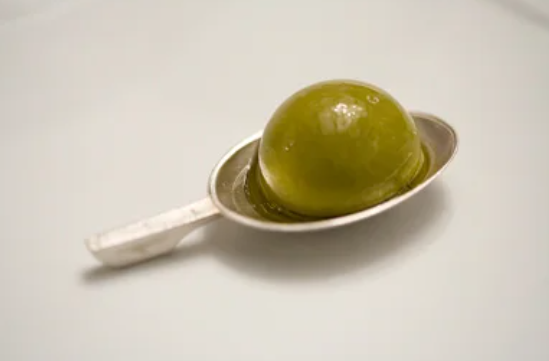
-
Marinas / Plankton Creations (Aponiente, Ángel León): Known as the "Chef of the Sea," Ángel León made his name by fearlessly exploring the ocean's depths. His signature ingredient is marine plankton, which he introduced to haute cuisine. Dishes like his Plankton Rice give a deep, ethereal taste of the sea, highlighting his work in creating a sustainable, blue gastronomy.
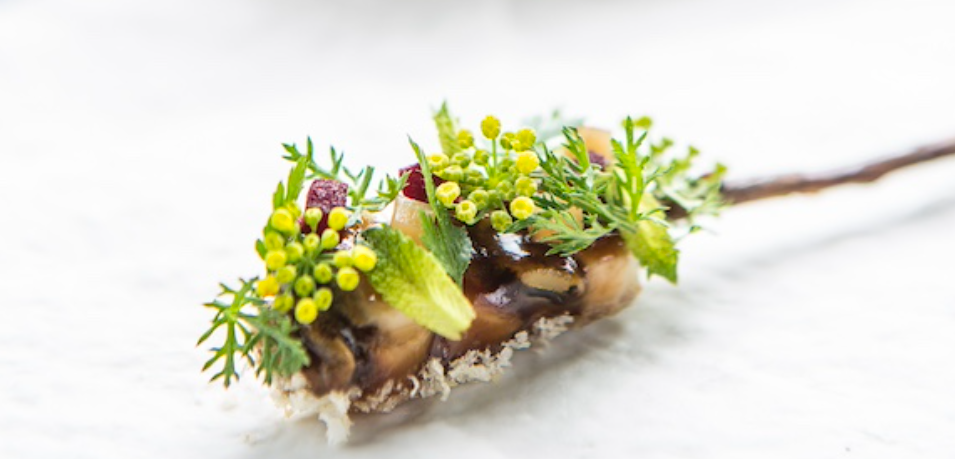
-
Spherified Caviar and Foams (Disfrutar, Castro, Casañas, Xatruch): Disfrutar continues the avant-garde tradition, showcasing dishes that are visual and textural illusions. Examples include a spectacular Panchino Bun oozing Beluga caviar from a siphon, and a Tartine of Foie Gras garnished with bubbles of spherified corn. These dishes show that the core techniques of the Spanish revolution are still fertile ground for new and playful creations.

-
Whole Grilled Turbot (Elkano, Aitor Arregui): While seemingly simple, the mastery of the grill at Basque restaurants like Elkano is a profound culinary statement. The restaurant's signature dish is the Whole Grilled Turbot, cooked over coals on the bone, basted with an "injerto" (a mix of oil, vinegar, and the fish's own gelatin). The focus is not on invention, but on elevating the product to its absolute highest expression—a deceptive simplicity that requires immense skill.
2. The Power of Product and Place
While the avant-garde grabs the headlines, the soul of Spanish cuisine remains its unshakeable commitment to the highest quality, most diverse ingredients.
Spain’s incredible geographical diversity—with over 52 provinces—results in a vast pantry, from the legendary red tuna of Andalucía to the baby tear-shaped peas of Basque Country and the cave-aged blue cheeses of Asturias. This product-first philosophy is the bedrock of even the most acclaimed restaurants.
Take Asador Etxebarri (ranked No. 2 globally), a temple to grilling that elevates simple ingredients like prawns and turbot through a mastery of flame. Similarly, Elkano in Getaria, renowned for its whole grilled turbot, exemplifies the sophistication of tradition. As one chef described it, the country’s success is a balancing act: "Haute cuisine restaurants like Disfrutar apply all the creativity imaginable," while traditional spots like Etxebarri and Elkano are "also very sophisticated in their own way."

3. The High-Low Revolution
Perhaps the most compelling argument for Spain as the "foodiest" country is the accessibility and quality of its everyday dining. Unlike fine-dining scenes in some other nations, Spain’s culinary excellence is not restricted to expensive tablecloth restaurants.
The country's food scene is a joyful blend of high-end experiences and affordable tapas bars. In Spain, the local culture goes hand-in-hand with food. Techniques pioneered by Adrià—like foams or spherifications—are often found in the small bites of a neighbourhood pintxo or tapas bar.
As Chef León put it, "The way of eating in Spain is a privilege. We have both fine dining restaurants and affordable tapas, not to mention excellent mid-range restaurants... that you can't find in other countries." Even the Michelin Guide recommends hundreds of Spanish restaurants where one can enjoy a meal for less than 40 euros.
This vibrant, pervasive quality is what makes Spain a food tourist destination—a remarkable 28% of the 84 million international tourists who visited in 2023 came specifically to eat.
From the dazzling molecular creations of Barcelona to the smoky perfection of a Basque grill, Spain is a country that reveres its past while fearlessly embracing its future. By balancing wild innovation with deep, regional tradition and making quality food a part of daily life, Spain has stopped whispering and is now roaring its culinary prowess for the world to hear.
 3
Like
Published at 10:43 PM Comments (0)
3
Like
Published at 10:43 PM Comments (0)
The Murcian Marinera: A Tapas Icon Born of the Sea and Land
Saturday, October 11, 2025
The bustling tapas bars of Murcia, a sun-drenched region in southeastern Spain, offer a dazzling array of small bites, but few are as iconic and beloved as the "Marinera." This seemingly simple tapa, a perfect marriage of crisp bread, creamy salad, and a salty anchovy, tells a story of the region's culinary heritage, where the bounty of the Mediterranean Sea meets the richness of the huerta (fertile agricultural land).
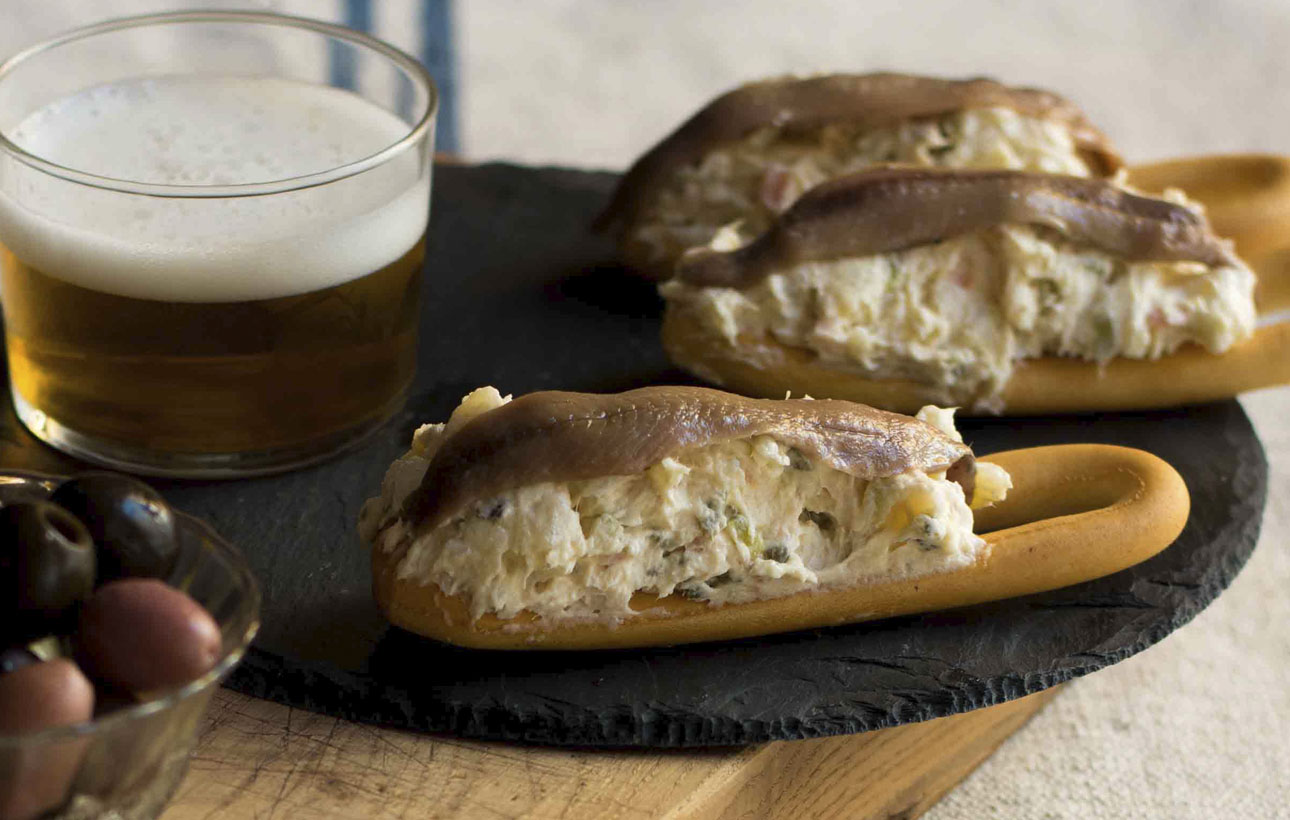
The exact origin of the Marinera is shrouded in the mists of time, but its components suggest a long-standing culinary tradition. The base, often a "rosca" (a ring-shaped breadstick) or a simple slice of baguette, speaks to the Spanish love affair with bread. The heart of the Marinera, the ensaladilla rusa (Russian salad), is a staple across Spain, a testament to its widespread popularity since its introduction in the 19th century. But it's the anchovy, often a local salazón (salt-cured fish), that firmly anchors the Marinera to Murcia's coastal identity.
Legend has it that the Marinera evolved from the humble necessity of utilising available ingredients. Fishermen and farmers, seeking a quick and satisfying bite, combined the ever-present bread with a spoonful of the popular Russian salad and topped it with a prized anchovy. The name "Marinera," meaning "seawoman" or "mariner," further reinforces its connection to the sea and the coastal communities that likely perfected this delightful combination.
Over time, what began as a practical snack evolved into a culinary institution. Today, no visit to Murcia is complete without indulging in a Marinera, often paired with a refreshing "caña" (small glass of beer) or a crisp local wine. It's a tapa that embodies the spirit of Murcian cuisine: fresh, flavorful, and deeply satisfying.
Crafting Your Own Marinera: A Taste of Murcia at Home
While enjoying a Marinera in its native setting is an experience, recreating this Murcian classic at home is surprisingly straightforward. The beauty lies in the quality of the ingredients and the simplicity of its assembly.
The Three Pillars of a Perfect Marinera:
The Base: Traditionally, a "rosca" is used – a light, crunchy, ring-shaped breadstick. If you can't find roscas, a good-quality baguette or even plain breadsticks will suffice. The key is a crisp base that can support the salad without becoming soggy.
Ensaladilla Rusa (Russian Salad): This creamy potato salad is the heart of the Marinera. While variations exist, the classic Murcian ensaladilla is typically made with potatoes, carrots, peas, and mayonnaise.
The Anchovy: This is where the Marinera gets its distinctive salty kick. High-quality anchovies, preferably from the Cantabrian Sea or local Murcian salazones, are essential. Look for plump, firm fillets packed in olive oil.

Recipe: Authentic Murcian Marinera
Yields: 12-15 tapas Prep time: 20 minutes Cook time: 15-20 minutes
Ingredients:
For the Ensaladilla Rusa:
2 large potatoes, peeled and diced into 1/2-inch cubes
1 large carrot, peeled and diced into small cubes
1/2 cup fresh or frozen peas
1/2 cup good-quality mayonnaise (homemade is ideal, but store-bought is fine)
Salt and freshly ground black pepper to taste
Optional: 1 hard-boiled egg, finely chopped; 1/4 cup canned tuna in olive oil, drained and flaked.
For Assembly:
1 package of "roscas" (Murcian ring-shaped breadsticks) or 1 baguette, sliced into 1/2-inch rounds
1 jar (about 12-15 fillets) high-quality anchovies in olive oil, drained
Optional garnish: A sprig of fresh parsley or a slice of pimiento (roasted red pepper).
Instructions:
1. Prepare the Ensaladilla Rusa:
Cook the vegetables: In a large pot, bring salted water to a boil. Add the diced potatoes and cook for about 10-12 minutes, or until fork-tender but not mushy.
Add carrots and peas: During the last 5 minutes of cooking the potatoes, add the diced carrots and peas to the pot. Cook until all vegetables are tender.
Drain and cool: Drain the vegetables thoroughly and spread them out on a plate to cool completely. This is crucial; warm vegetables will break down the mayonnaise.
Combine and season: Once the vegetables are cool, transfer them to a medium bowl. Gently fold in the mayonnaise.
If using: Add the chopped hard-boiled egg and flaked tuna now.
Taste and season: Add salt and pepper to taste. Be mindful of the salt, as the anchovy will add more salinity. Cover and refrigerate for at least 30 minutes to allow the flavours to meld.
2. Assemble the Marineras:
Prepare your base: Arrange the roscas or baguette slices on a serving platter.
Spoon the ensaladilla: Take a generous spoonful of the chilled ensaladilla rusa and place it on top of each rosca or baguette slice. Form a small mound.
Top with anchovy: Carefully place one drained anchovy fillet on top of the ensaladilla, curving it slightly to fit the shape of the tapa.
Garnish (optional): If desired, add a tiny sprig of fresh parsley or a small piece of roasted red pepper for colour and a touch of freshness.
Serving Suggestion:
Serve your homemade Marineras immediately, ideally with a cold beer, a glass of chilled white wine, or a local Murcian vermouth. The contrast of the crunchy base, creamy salad, and salty anchovy is what makes this tapa so utterly irresistible.
The Murcian Marinera is more than just a snack; it's a culinary emblem, a perfect representation of a region that cherishes its simple, yet profoundly delicious, gastronomic traditions. Enjoy!
 3
Like
Published at 11:21 AM Comments (1)
3
Like
Published at 11:21 AM Comments (1)
Four Cities Ranked Among Europe's Most Beautiful
Friday, October 3, 2025
Spain has cemented its reputation as a leading destination for beauty, culture, and charm, with four of its cities making the prestigious ranking of the most beautiful in Europe, as compiled by the international travel, tourism, and lifestyle magazine Travel + Leisure. The ranking is based on a vote by nearly 180,000 readers who evaluated cities across the globe on their attractions, culture, gastronomy, friendliness, service, and overall value.
While Florence, Italy, secured the top spot in Europe with a remarkable score of 90.08 out of 100, Spanish cities dominated the runner-up positions, highlighting the country's enduring appeal.
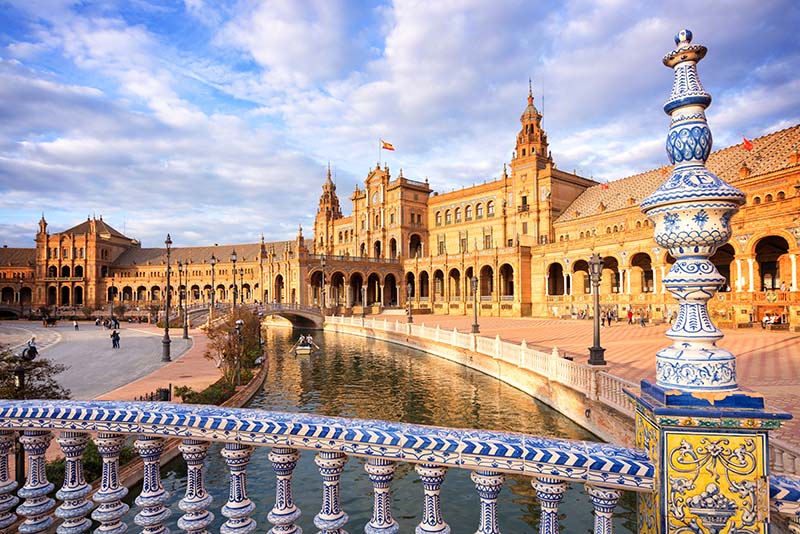
The Andalusian Gems Claim the Podium
The top of the European list is marked by the stunning success of two Andalusian cities: Seville and Granada. These cultural powerhouses claimed the second and third places, respectively, confirming their status as must-visit European destinations.
Seville, with its stunning Alcázar, grand Gothic cathedral, and vibrant flamenco culture, scored an impressive 89.49 points
Granada, home to the magnificent Alhambra palace and the charming Albaicín neighbourhood, followed closely with a score of 89.48 points.
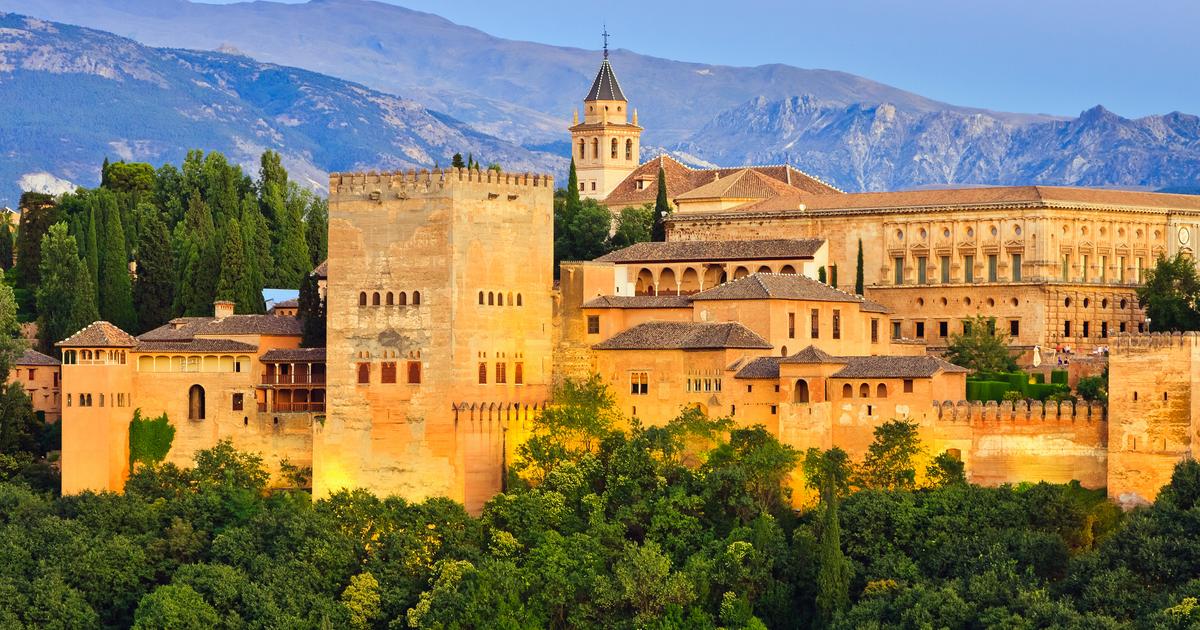
Madrid and Córdoba Complete the Quartet
Rounding out the Spanish representation are the nation's capital and another Andalusian treasure:
Madrid, a hub of art, history, and cosmopolitan energy, secured eighth place on the list with 88.02 points. The capital was praised for its world-class museums, lively squares, and excellent culinary scene.
Córdoba, with its breathtaking Mezquita-Cathedral and picturesque flower-filled patios, also made a strong appearance, earning 13th place with 87.22 points.
The strong showing of Seville, Granada, Madrid, and Córdoba underscores Spain's incredible diversity, offering visitors everything from imperial palaces and Moorish architecture to world-class modern museums and bustling city life, all underpinned by the country's renowned warmth and gastronomy.
The most beautiful cities in Europe
|
Rank
|
City
|
Country
|
Score (out of 100)
|
|
|
1
|
Florence
|
Italy
|
90.08
|
|
|
2
|
Seville
|
Spain
|
89.49
|
|
|
3
|
Granada
|
Spain
|
89.48
|
|
|
4
|
Istanbul
|
Turkey
|
89.47
|
|
|
5
|
Rome
|
Italy
|
88.91
|
|
|
6
|
Siena
|
Italy
|
88.33
|
|
|
7
|
Porto
|
Portugal
|
88.24
|
|
|
8
|
Madrid
|
Spain
|
88.02
|
|
|
9
|
Lisbon
|
Portugal
|
87.44
|
|
|
10
|
Lyon
|
France
|
87.43
|
|
|
11
|
Prague
|
Czech Republic
|
87.38
|
|
|
12
|
Salzburg
|
Austria
|
87.3
|
|
|
13
|
Córdoba
|
Spain
|
87.22
|
|
|
14
|
Athens
|
Greece
|
86.69
|
|
|
15
|
Aix-en-Provence
|
France
|
86.6
|
|
 3
Like
Published at 6:13 PM Comments (1)
3
Like
Published at 6:13 PM Comments (1)
Spam post or Abuse? Please let us know
|
|